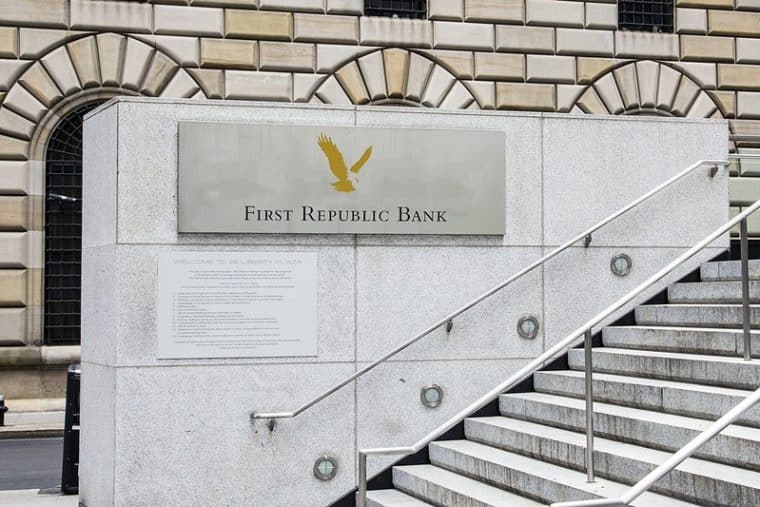
The Federal Deposit Insurance Corporation (FDIC) has sold the assets of the California-based First Republic Bank to JP Morgan Chase to protect depositors in a deal where the latter is scooping up $330 billion in assets including nearly $104 billion in deposits.
The federal institution announced the agreement this morning and clarified that several banks competed to purchase the assets of FRB. A total of 84 offices owned by FRB will operate normally as JP Morgan Chase branches in eight states to serve depositors.
Just a few days ago, various media outlets including CNBC reported that the bank may be going into FDIC receivership. However, negotiations were reportedly ongoing with multiple financial institutions to arrange the sale of FRB.
The stock of First Republic Bank experienced a 50% back on 25 April when these rumors started to circulate and kept on dropping sharply during the days that followed. The bank’s market valuation had already dipped significantly following the collapse of the Silicon Valley Bank (SVB) as investors feared that the worst was coming.
Same as SVB The First Republic Bank Was Heavily Exposed to Tech
Same as SVB, the First Republic Bank loaned significant amounts to tech companies, private equity funds, and venture capital firms in California and other neighboring states. With the downturn that the sector recently experienced, these could expose the bank to heavy losses if these firms were to fail on their payments.
According to the bank’s 2022 annual report, nearly 60% of its business loan portfolio went to these firms. This segment made up roughly 11% of the institution’s total portfolio. In addition, FRB was on the hook for some heavy losses on their fixed-income asset portfolio including tax-exempt municipal bonds and mortgage-backed securities.
Today’s FDIC memo disclosed that JP Morgan will enter a “loss-share transaction” on FRB’s single-family, residential, and commercial loans. The total valuation of the exposed portfolio was not disclosed by the agency said that the agreement with result in a $13 billion loss for the Deposit Insurance Fund.
By the end of the fourth quarter of 2022, the FDIC’s Deposit Insurance Fund (DIF) had a balance of $128.2 billion meaning that these losses will account for nearly 10% of the fund’s assets.
The resulting bill from the collapse of SVB and Signature Bank back in March was approximately $22.5 billion according to the FDIC’s semiannual update about the status of the DIF.
However, the DIF was not directly impacted by those losses as the agency has the right to collect a “special assessment” from its member banks to cover itself up.
FRB Saw 40% of its Deposits Leave in the Past Three Months
In its latest quarterly earnings report published on 24 April, the First Republic Bank disclosed that it lost 40% of its deposits compared to the balance it had by the end of 2022.
The institution disclosed that on 10 March, it started to experience “unprecedented deposit outflows” amid the rumors that tech-exposed banks could be experiencing issues to honor withdrawals.
Also read: Best Tech Stocks to Buy in April 2023
A week later, a group of banks deposited $30 billion into FRB to help it shore up its finances and withdrawals were slowing down considerably. The institution also accessed some short-term lifelines from the Federal Reserve Bank and JP Morgan Chase back then.
In total, the bank’s short-term borrowings jumped from $6.7 billion to $80.4 billion during the three months ended on 31 March as FRB struggled to keep up with depositors’ eagerness to take their money out.
Other measures were implemented to trim the bank’s expenditures including letting go of nearly a quarter of its workforce, suspending its dividends, and dramatically reducing the compensation of its C-level officers.
Other Related Articles: